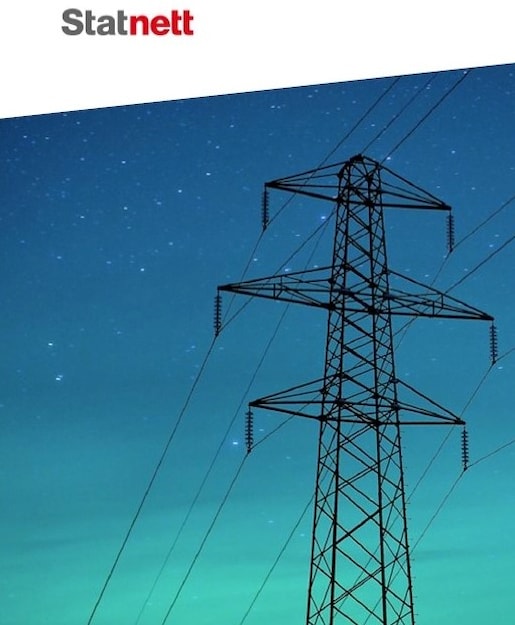The Statnett Group's underlying profit after tax in the first half of 2021 was NOK 862 million, while the corresponding profit for the first six months last year was NOK 1209 million.
Operating revenues were somewhat higher in the first half of this year, compared with last year, by NOK 5 279 million this year against NOK 4 776 million last year. At the same time, operating costs increased from NOK 3 173 million last year to NOK 4 240 million this year.
- The decline in underlying profit is mainly due to very high power prices so far this year, while in 2020 there were historically low power prices. Higher volumes related to transmission losses and an increase in other operating costs due to higher activity also contributed, says Knut Hundhammer, CFO and Executive Vice President of Statnett.
Accounting profit after tax for the group was NOK 590 million in the first half of 2021 (NOK 1,121 million). Statnett's lower income balance increased by NOK 349 million in the first half of the year.
Statnett's Regulated Income
Statnett's operating revenues are regulated by the Norwegian Energy Regulatory Authority (RME), who sets the upper limit for permitted revenue
On 14 April, the RME published a report outlining changes in the calculation of Statnett’s cost norm
and revenue cap – i.e. how much grid rental Statnett can collect. The changes will not have a major
impact on the revenue cap in 2021.
Based on the financial consequences of Covid-19 for Norwegian consumers and businesses, Statnett has reduced the grid tariff to its direct customers by 24 per cent for 2021 compared with 2020.
”Going green faster”
In the first half of 2021, Statnett processed as many connection requests as in the whole of 2020. ”Going green faster” is a reality and gives name to Statnett's new strategy that the board adopted in June.
- Statnett will deliver a secure power supply and facilitate sustainable value creation on the road to the zero-emission society. This transition is accelerating, and Statnett must plan a power system that takes into account power consumption of up to 220 TWh in 2050 compared to 140 TWh today, Knut Hundhammer explains.
Record High Electricity Consumption, Power Production and Electricity Price
The operating situation has despite the corona pandemic been satisfactory during the first half of 2021 with stable system and grid operations.
During the first half of 2021, record high electricity consumption was registered several times in Norway. January also offered record power production. Cold weather, rising gas prices on the continent, and higher CO2 costs also contributed to power prices at a record high level for much of the period.
Large Construction Projects are Carried Out as Planned
In the first half of 2021, Statnett invested a total of NOK 3 231 million, compared with NOK 3 351 million in the corresponding period in 2020. This includes commissioned grid projects, projects under construction, ICT, and other investments, as well as the purchase of grid facilities from other grid owners. Expected investment level for the whole of 2021 is approximately NOK 6.8 billion.
The subsea interconnection NordLink between Norway and Germany was put into regular operation in March and was officially opened on 27 May. The cable has a capacity of 1400 MW and is 623 km long.
The North Sea Link (NSL) subsea interconnector between Norway and the UK was completed on 15 June and testing has been ongoing throughout the summer. Trial operation is scheduled to start on 1 October 2021. The cable has a capacity of 1400 MW, is 720 km long and is the world's longest subsea interconnector.

